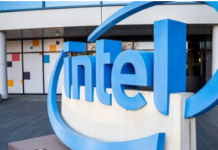With the upcoming arrival of the OnePlus 2 and Sony Xperia Z3, which will be equipped with the latest version of the Snapdragon 810 processor, it’s time to ask the right questions about Qualcomm’s new v2.1 version of the Soc. Have the overheating problems been resolved? According to the first feedback from Japanese users of the latest Sony, this is far from the case, even if a software update is already planned to solve the problem.
- Related: Snapdragon 810, overheating problems confirmed, what impacts?
In order to get a clearer picture, the American site Anandtech has carried out various comparative tests between version 2 of the Snapdragon 810, the first revision of the Soc aimed at the general public that can be found at the heart of the HTC One M9 or the LG G Flex 2 and the version 2.1 found in the Xiaomi Mi Note Pro, the Xperia Z3 and soon in the OnePlus 2.
As you will see, several changes have been made between the two versions. However, this does not mean that Qualcomm has acknowledged the problem or that it will be resolved. Last year, the chip manufacturer also proposed two different grinds of the Snapdragon 801 so a slightly faster (AC), however, the first version (AB) already offered quite honorable performance.
- Don’t miss: for Qualcomm, the S810’s overheating problems are “crazy”
A slight but present performance gain
The first notable change between the V2 and the V2.1 of the Snapdragon 810 concerns the GPU whose frequency has been slightly increased (by 5%) and from 600 MHz to 630 MHz, to reduce the gap with the Mali T760MP8 GPU (772-700 MHz) of the Galaxy S6 and S6 Edge. It is also noted that there is significantly less “throttling” on the A57 cluster side, although the mechanism always reduces the frequency in case of heavy loads. This is especially what happens when the temperature rises toomuch, even if there are some improvements on the side of version 2.1.
On the graphs below, you can see the differences between the HTC One M9 and the Xiaomi Mi Note Pro, in terms of memory management,with the test representation at the top and the percentage difference at the bottom. As you can see, the 2.1 version found in Xiaomi’s phablet often holds the advantage. The latency of the first-level (L1) and second-level (L2) cache has improved by about 15%, but DRAM latency remains roughly the same.
In terms of bandwidth, there is an improvement of about 33% on the main memory side and about 38% if all segments are taken into account.
Just because of the improvements made on the memory side, we can consider qualcomm’s Soc v2.1 to be an important revision,but now let’s move on to the most important, temperature management.
What about overheating problems?
Over the past few months, we have heard several times about a revamped version of the Snapdragon 810 processor that would solve the famous overheating problems. According to Anandtech, this version is no more or less than this v2.1 version. As these early tests revealed, the throttling mechanism of the A57 cores is less important than with version 2. However, as the xperia Z3’s initial feedback proved, the improvements are nowhere near as obvious as one might have hoped, since Sony itself has acknowledged the problem of overheating its Z3 and will soon offer an update.
For its part, OnePlus explained yesterday in its latest press release that the pace of the processor embedded by the OnePlus 2 would be locked to 1.8 Ghz (instead of 1.98 Ghz) in order to avoid any problem of overheating. Let’s hope the Chinese company is telling the truth, even if the fact is that it also means that the problem is still present, otherwise why reduce the frequency of the processor?
It is also necessary to take into account the differences in behavior from one smartphone to another, the form factor of each device and the optimizations that can be made by manufacturers. The Xperia Z3 is only 6.9 mm thick, which doesn’t necessarily help cooling.
Before we can take a real look at the problems of overheating and the improvements proposed by this 2.1 version, it will of course be necessary to carry out more in-depth tests. Thermal management improvements are present but now need to be evaluated to determine whether they are minimal or substantial. Meanwhile, this 2.1 version of the Snapdragon 810 remains Qualcomm’s octo 64 Bit solution for flaghips until the arrival of Snapdragon 820.
via
































